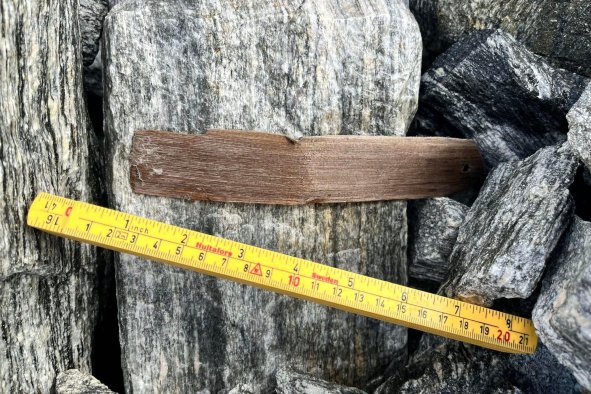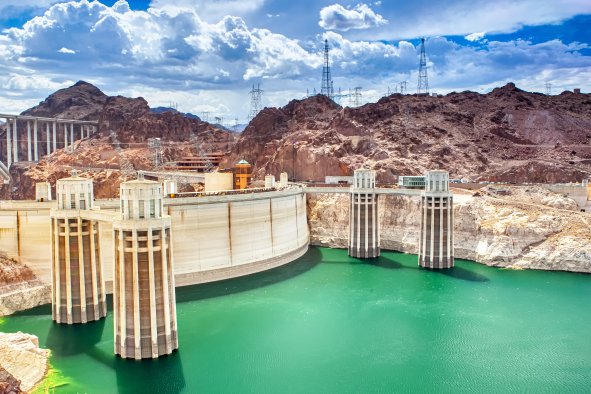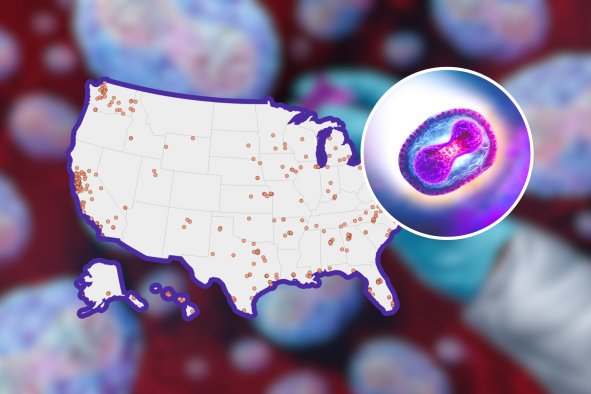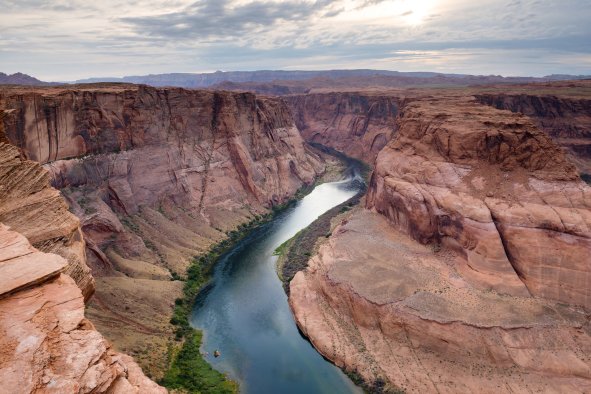The melting of permafrost in the Arctic could result in toxic mercury leaching into the waters of Alaskan rivers, putting millions of people at risk.
This "giant mercury bomb" lurks within the soils of permafrost in Alaska, which is slowly melting and being washed away by rivers such as the Yukon River, according to a new paper in the journal Environmental Research Letters.
This leaking of toxic metals into rivers may endanger many of the 5 million people who live within the Arctic Circle worldwide, especially the 3 million who live in areas where permafrost is predicted to totally vanish by the year 2050.
"There could be this giant mercury bomb in the Arctic waiting to explode," study co-author Josh West, a professor of earth sciences and environmental studies at the University of Southern California Dornsife College of Letters, Arts and Sciences, said in a statement.
Permafrost is a layer of soil and rock that remains frozen for at least two consecutive years. It is found in polar regions and high-altitude areas, such as the Arctic, Siberia, Alaska and northern Canada, and can be between a few feet and thousands of feet thick. The "active layer" on top of the permafrost thaws each summer and refreezes in winter, while the deeper layers remain frozen.
There are about 9 million square miles of permafrost across the Northern Hemisphere, comprising about 25 percent of the total exposed land surface not covered with glaciers.
Permafrost is melting (or thawing) primarily because of climate change and global warming.
"The Arctic is warming four times faster than the global average, destabilizing permafrost soils that have remained frozen for two or more years and that underlie much of the Arctic," the researchers wrote in the paper. "While moderate climate scenarios project 15 [percent] to 87 percent permafrost loss by 2100, extreme scenarios estimate up to 99 percent loss."
As it defrosts, permafrost releases whatever other materials were locked inside of it, ranging from greenhouse gases like carbon dioxide (CO2) and methane (CH4) to toxic metals like mercury.
"Because of the way it behaves chemically, a lot of mercury pollution ends up in the Arctic," West said. "Permafrost has accumulated so much mercury that it could dwarf the amount in the oceans, soils, atmosphere and biosphere combined."
According to the new paper, the researchers measured the amount of mercury being released from permafrost in Alaska's Yukon River Basin to determine how much more might be waiting to escape in the coming years.
Previous research sampled mercury levels in permafrost by taking core samples from the upper 10 feet of the soil, but these studies found huge variation and didn't sample across all depths.
In the new research, the scientists analyzed mercury in riverbank sediments, measuring deeper into the soil.
"The river can quickly mobilize large amounts of sediment containing mercury," co-author Isabel Smith, a Ph.D. candidate at USC Dornsife, said in the statement.
They found that the mercury levels matched the higher estimates from previous research, meaning that mercury is being released in high concentrations as the permafrost melts.
They also used remote sensing data from satellites to determine how the Yukon is changing course over time, which will affect how sediments containing mercury are being eroded by the river and washed downstream. This allows scientists to predict how much mercury is in the soil, and how much of it is being eroded away.
"Taking into account all of these factors should give us a more accurate estimate of the total mercury that could be released as permafrost continues to melt over the next few decades," Smith said.
Mercury poisoning can have serious health effects, particularly on the nervous system, ranging from tremors, memory problems, coordination issues and mood changes to developmental issues in children and kidney damage.
Thankfully, the amount of mercury being released from the permafrost isn't a threat, especially in drinking water.
"We're not facing a situation like Flint, Michigan," West said. "Most human exposure to mercury comes through diet."
However, this may change, as the effects of mercury can accumulate up the food chain and over time within the body.
"Decades of exposure, especially with increasing levels as more mercury is released, could take a huge toll on the environment and the health of those living in these areas," Smith said.
Additionally, much of the mercury being washed out of the permafrost ends up being deposited on riverbanks and sandbars rather than being swept all the way downstream to human civilization.
"There's another layer of complexity here," West said. "The rivers are reburying a considerable amount of the mercury. To really get a handle on how much of a threat the mercury poses, we have to understand both the erosion and reburial processes."
Do you have a tip on a science story that Newsweek should be covering? Do you have a question about permafrost? Let us know via science@newsweek.com.
References
Smith, M. I., Ke, Y., Geyman, E. C., Reahl, J. N., Douglas, M. M., Seelen, E. A., Magyar, J. S., Dunne, K. B., Mutter, E., Fischer, W. W., Lamb, M. P., & West, A. J. (2024). Mercury stocks in discontinuous permafrost and their mobilization by river migration in the Yukon River Basin. Environmental Research Letters. https://doi.org/10.1088/1748-9326/ad536e
Disclaimer: The copyright of this article belongs to the original author. Reposting this article is solely for the purpose of information dissemination and does not constitute any investment advice. If there is any infringement, please contact us immediately. We will make corrections or deletions as necessary. Thank you.



